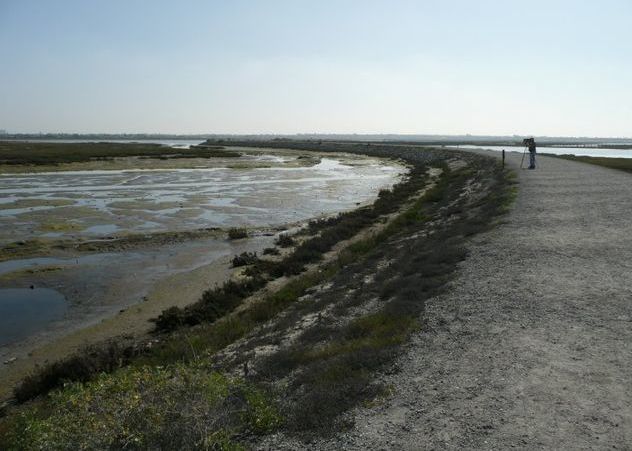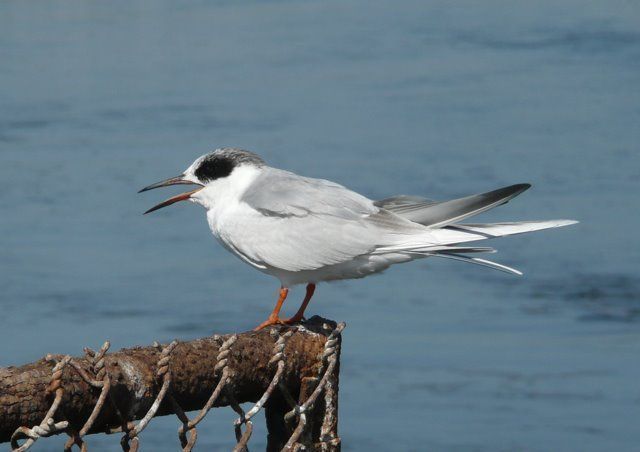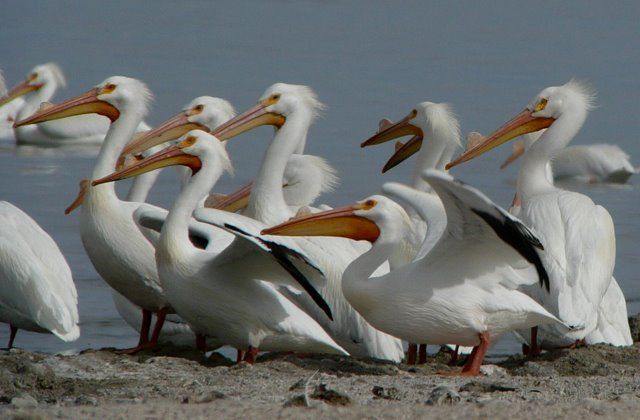Huge numbers of water birds at the Salton Sea and Bolsa Chica, Calif.
- Michelle Wood: SWCD
- March 27, 2012
- 699
On a recent birding trip to southern California, one of the goals was to spend some time at the Salton Sea. Located east of San Diego and close to the Arizona and Mexican borders, this huge lake is home to an incredible number of birds. Surrounded at least on the southern parts of the lake by irrigated Imperial Valley agriculture, the lake has problems with contamination and is subject to diseases that affect the millions of birds at times.
The sheer number of birds is hard to imagine. Ron and I spent parts of two days exploring the area from a number of dirt roads that become impossible to navigate if it rains. At every viewpoint we found huge numbers of birds. At times one could see 1,000 American Avocets and 200 Black-necked Stilts at one place. Upward of 30,000 gulls were gathering at dusk on the southeast shores. Light-colored masses of birds usually turned out to be White Pelicans. We watched flocks of Marbled Godwits, Willets, and Long-billed Curlews. Western Sandpipers covered the mud-flats like ants.
Among the large number of common birds we found one lone Glaucous Gull, rare to uncommon at the Salton Sea. I wish we could have seen a Yellow-footed Gull, but they are present in the summer and fall. In the nearby town of Brawley, we watched Costas and Annas Hummingbirds at feeders in a residential part of town. When a cold front with high winds and rain approached the area, we headed north to Lake Havasu, but I hope to get back to the Salton Sea again.
A few days earlier we had taken a boat trip from the coastal city of Ventura to Santa Cruz Island, home of the endemic Island Scrub-Jay. There were numerous jays on the island and they seemed as curious about us as we were about them. On the boat trips out to the island and back there were a number of Xantuss Murrelets, sea birds that nest in the area. Neither Ron or I had seen them before.
Although I dont like to drive around the Los Angeles area, we wanted to spend a few hours at Bolsa Chica, a wonderful wetland preserve near Huntington Beach.
The place was impressive, with close looks at many different kinds of birds, including Western and Clarks Grebes, Surf Scoters, lots of shorebirds and ducks, plus two California Gnatcatchers and a pair of Rufous-crowned Sparrows. Elegant Terns nest in the area and we had plenty of good looks at them, as well as Royal, Caspian, and Foresters Terns.
Near Bolsa Chica is another great birding spot called Upper Newport Bay. Here birders, bikers and runners share the one-way road that follows the estuary inland. Again there were thousands of shorebirds, gulls and terns, but also both Clapper and Sora Rails. All too soon we had to leave to get to our destination for the night.
Locally, the Shreve Migration Sensation had another very successful day March 24. Good birds for the day included a Red-necked Grebe at Pleasant Hill Lake, and a huge surprise - two Nelsons (Sharp-tailed) Sparrows at Funk Bottoms. More on that later.
Good birding!
To read more Gone Birdning, visit Bruce Glick at www.HolmesBargain Hunter.com.








